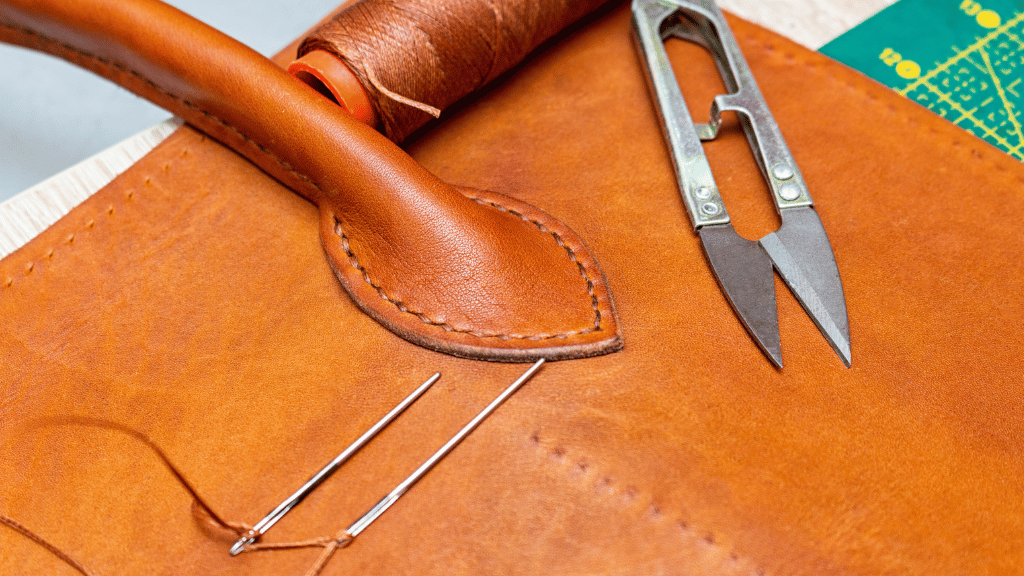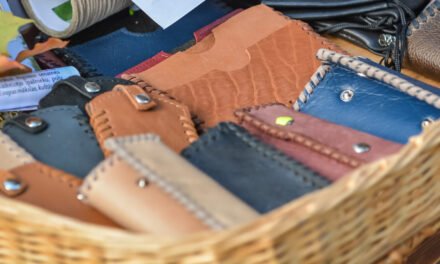Leather bag manufacturing, despite being a well-established industry, encounters several challenges across production, quality control, sustainability, and market demands. Addressing these issues is critical to ensuring high-quality products while maintaining cost-efficiency and meeting modern environmental standards. Below are the most common issues faced in leather bag manufacturing:
1. Raw Material Quality and Sourcing
- Inconsistent Leather Quality:
Leather, being a natural material, can exhibit variations in texture, grain, thickness, and durability. Inconsistency in the raw material can lead to production defects or mismatched panels. - Defects in Hides:
Hides may have natural imperfections, such as scars, scratches, insect bites, or uneven tanning, which require sorting and processing, increasing wastage. - Sourcing Challenges:
Procuring high-quality leather at a consistent scale can be difficult due to fluctuations in supply, price, and global demand. Dependence on specific suppliers can disrupt production schedules. - Ethical Concerns:
Consumers are increasingly concerned about the ethical sourcing of leather, pushing manufacturers to prove traceability and compliance with sustainable practices.
2. Environmental Compliance
- Pollution from Tanning Processes:
Traditional tanning methods, particularly chrome tanning, generate harmful chemical effluents that can pollute water and soil if untreated. Meeting strict environmental standards is both costly and challenging. - Water Usage and Waste:
Leather processing consumes significant amounts of water, and inefficient treatment can result in water waste. Implementing zero-discharge treatment plants requires substantial investment. - Sustainability Pressures:
Manufacturers face growing pressure to adopt eco-friendly tanning and recycled materials while maintaining profitability. Transitioning to vegetable-tanned leather or plant-based alternatives can be costly.
3. Manufacturing Defects
- Stitching and Hardware Failures:
Poor-quality stitching, use of subpar threads, or improper hardware attachment can lead to premature failure of handles, straps, and seams. - Inconsistent Dyeing or Finishing:
Achieving uniform color and consistent finishes during dyeing can be challenging. Variations may occur due to chemical imbalances or uneven absorption by the leather. - Structural Issues:
Improper cutting, bonding, or alignment of leather panels can result in deformed or misaligned bags, which fail quality checks. - Shrinkage and Stretching:
Leather may shrink or stretch during drying or finishing processes, affecting the bag’s final dimensions and fit.
4. High Production Costs
- Expensive Raw Materials:
High-quality leather is costly, and price fluctuations due to global market trends, cattle supply, and environmental regulations add to production challenges. - Labor-Intensive Processes:
Crafting leather bags involves skilled manual work, including cutting, stitching, finishing, and quality checks, leading to high labor costs. - Advanced Machinery Costs:
Incorporating modern technologies like laser cutting, seamless stitching, or smart hardware integration requires significant upfront investment.
5. Quality Control Challenges
- Product Consistency:
Ensuring uniform design, finish, and performance across large batches of bags can be difficult, especially when working with natural materials. - Durability Testing:
Proper quality testing (e.g., for tensile strength, abrasion resistance, and hardware durability) is time-consuming and often overlooked, leading to quality inconsistencies. - Human Errors:
Manual operations in cutting, stitching, or assembly can result in minor defects that impact the product’s aesthetics and functionality.
6. Design and Functionality Limitations
- Balancing Design and Durability:
Modern consumers demand lightweight, minimalist bags that are still durable. Finding the right balance between aesthetics and strength is challenging. - Ergonomics and Tech Integration:
The addition of modern features like padded laptop compartments, USB ports, and RFID pockets can complicate the design process and production. - Customization Complexity:
Offering personalized designs (e.g., monograms, modular interiors) increases production time and complexity, affecting scalability.
7. Market Competition and Pricing Pressure
- Competition with Synthetic Alternatives:
Synthetic and vegan leather alternatives are gaining popularity due to their lower cost and eco-friendly appeal. Traditional leather manufacturers face competition from these materials. - Price Sensitivity:
High production costs for premium leather bags often conflict with market expectations for affordable products. Manufacturers must balance cost and quality to remain competitive. - Counterfeit Products:
The market is flooded with counterfeit leather bags, which dilute brand value and compete unfairly on pricing.
8. Skilled Labor Shortages
- Dependence on Craftsmanship:
Leather bag manufacturing requires skilled artisans for tasks like cutting, stitching, and finishing. A shortage of skilled workers can impact productivity and quality. - Training Costs:
Training new workers to meet quality standards is time-intensive and costly for manufacturers.
9. Supply Chain Disruptions
- Raw Material Delays:
Delays in sourcing hides, tanning agents, and other components can disrupt production timelines. - Global Supply Chain Risks:
Dependence on international suppliers for hardware, dyes, or specialty components exposes manufacturers to logistics delays and price fluctuations.
10. Durability and Performance Issues
- Wear and Tear Under Stress:
Leather bags must endure heavy loads, daily use, and environmental exposure. Issues like tearing, hardware failure, and fading colors can result from inadequate materials or poor workmanship. - Weight Concerns:
Leather is inherently heavier than synthetic materials. Creating durable yet lightweight bags remains a persistent challenge.
11. Environmental and Ethical Concerns
- Animal Welfare Issues:
The ethical sourcing of hides has become a major issue, with increasing scrutiny from consumers and advocacy groups. Manufacturers must ensure traceability and compliance with ethical standards. - Waste Management:
Leather production generates significant solid and liquid waste. Managing and recycling waste in an eco-friendly manner is a growing concern.
Conclusion
The leather bag manufacturing industry faces a range of challenges, from sourcing high-quality raw materials and ensuring product consistency to addressing environmental regulations and meeting market demands. Manufacturers must innovate by adopting sustainable practices, investing in modern technologies, and ensuring quality control to stay competitive. Overcoming these challenges will help manufacturers create durable, functional, and environmentally responsible leather products while meeting the evolving expectations of modern consumers.
Hashtags
#LeatherSupplyChain #EcoFriendlyProduction #EthicalManufacturing #LeatherCrafting #IndustryStandards #LeatherProductionTips #InnovativeTechniques #LeatherGoodsMarket #ExpertCraftsmen #ProductionSolutions #LeatherProductDesign #SustainabilityGoals #LeatherIndustryTrends #QualityAssurance #EfficientProduction #LeatherProductTesting #IndustryChallenges #LeatherProductDevelopment #SustainableSourcing #LeatherProductionIssues #ExpertAdvice







